Black Seas: Feuerschiffe
Warlord Games haben die neuen Feuerschiffe veröffentlicht.
Black Seas: Fire Ship Squadron – €27,00
Metal Resin
Made to Order
While we hold as much stock as possible, on occasion this product may need to be cast especially for you by our expert staff. If your order includes this item, it may take a few more days before we ship it.
Filled with gunpowder and other combustible materials, Fire Ships were deliberately set ablaze and sent towards the enemy battleline where they would explode or set opposing ships alight.
Warships during the Age of Sail were highly susceptible to fire. With wooden construction seamed with fat and tar, and an abundance of stored gunpowder onboard, there was little aboard a warship that would not burn. As such, the period of usage of fireships in national Navies runs almost parallel to that of the usage of cannons, beginning in 1588 with the defeat of the Spanish Armada, up to the Battle of Navarino in 1827.
Purpose built fireships thus increasingly became a staple of fleets as the 17th century bled into the 18th. Bespoke features, such as grappling hooks to encourage collision entanglements, were incorporated into the designs. Although fire ships could be set adrift if the wind was favourable, it was just as common for such vessels to maintain a skeleton crew. These crews were expected to abandon ship at the last possible moment.
Fire ship tactics enjoyed most success against harboured or anchored enemies, as a competent captain was usually able to manoeuvre their vessel out of harm’s way and lay fire down to disable the ablaze ships. Fire ships were used more sparingly during the Napoleonic Wars, but they remained a distinct class of the Royal Navy until 1808. Though approaching obsolescence in the early 19th century they still met notable successes such as at the Battle of Tripoli Harbor (US Navy, 1808) and the Battle of the Basque Roads (Royal Navy 1809).
In Black Seas, Fire ships are activated in Weather Gage order like any other ship. They will always travel directly forward unless affected by the wind or a collision – they will always fail collision tests, which is more or less the idea! Enemy (and friendly) ships would do well to make utmost effort to get out of their way, as if they come within 2″ of a fire ship, they are also set ablaze!
Contains three Black Seas fire ships including game aids.
Quelle: Warlord Games


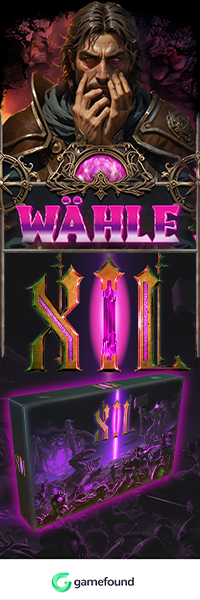
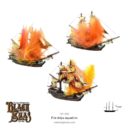
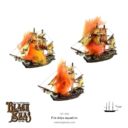
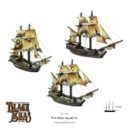
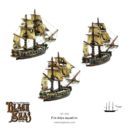
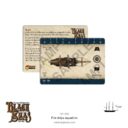


Hach, das wird ein riesen Spaß auf dem Schlachtfeld.
Ich muss mal klugscheissen:
Englisch Fireship, wird im Deutschen als Brander übersetzt. Ein Schiff das zu taktischen Zwecken angezündet, mit brennendem Material und Sprengstoff gefüllt vom Wind in Richtung Gegner getrieben wird.
Ein Feuerschiff dagegen ist in der deutschen Sprache grundsätzlich positiv belegt, das ist nämlich ein Schiff, das zu Zwecken der Navigation an einer bestimmten Position verankert wurde und den anderen Schiffen zur Orientierung dient (Beispiel ehemaliges Feuerschiff Hamburg). Das wiederum wird im englischen als Light Vessel oder Light Ship bezeichnet. Quasi ein zum Leuchtturm umfunktioniertes Schiff, inzwischen nur noch als Museum zu bewundern.
Brander dagegen erleben leider eine moderne Renaissance in Form von mit Sprengstoff gefüllten Booten…
Is doch eine gute Idee, eine solch gängige Taktik in ein Regelwerk zu integrieren…
Danke für das Füllen einer Wissenslücke =)
Der Effekt mit Watte schaut auf alle Fälle genial aus. Kenne das System gar nicht. Schaut aber ein bisschen so wie die Pirates of the spanish main von damals aus.
Also ich selbst spiele nur Mantics Armada, was auf Black Seas basiert. Armada ist eines meiner absoluten Lieblingsspiele geworden, wir haben es dieses Jahr beinahe wöchentlich gespielt. Das Problem an der Sache ist, dass die Regeln mir für ein Fantasy Spiel extrem gut gefallen, als historische Simulation würde ich sie jedoch nicht bevorzugen. Da kommt es immer darauf an, was man will – ich weiß allerdings auch nicht, inwieweit sich beide Systeme doch unterscheiden.